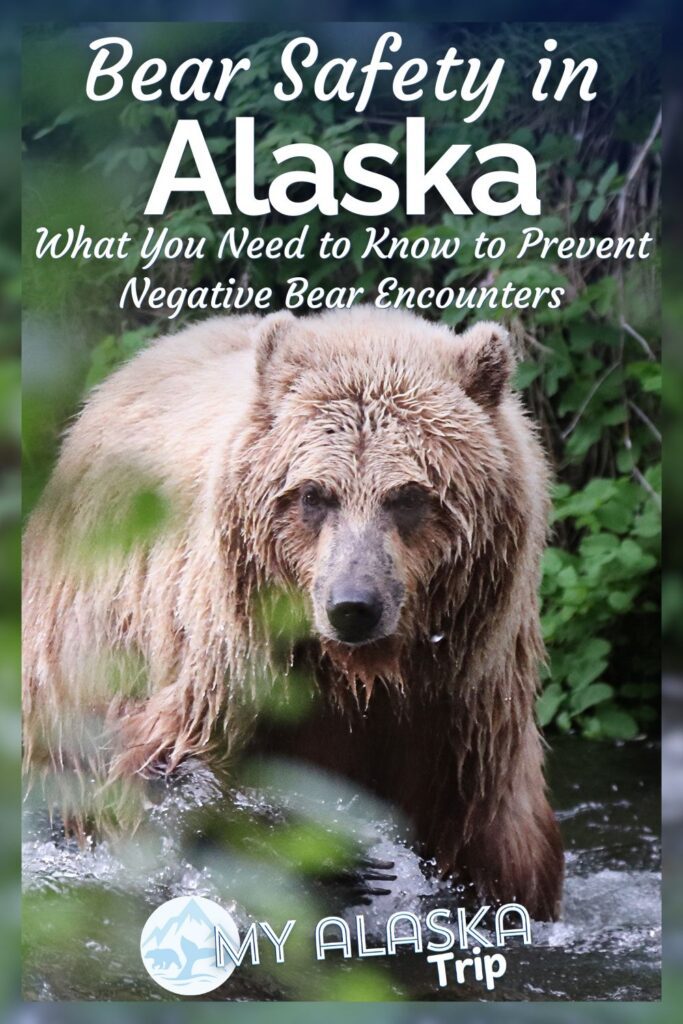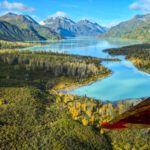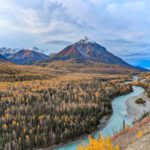So, you are finally planning that trip to Alaska! It will be a once in a lifetime experience for you but, once you get here and realize how beautiful it is, you will probably be back. Yes, it is THAT beautiful! The topic of this article, however, is bears. and bear safety in Alaska to be specific. You might have noticed as you are researching things to do in Alaska that you are seeing and hearing a lot about bears. That is because bears are everywhere in Alaska and there is no avoiding them. Even the large cities (large for us!) like Anchorage and Fairbanks have a recognized bear population that primarily resides inside the city limits.
Bears are so interwoven in Alaskan culture that the great bear, Ursa Major (the big dipper), is on our state flag. Bears are a thing here so bear safety in Alaska is very important. Generally speaking, humans and bears in Alaska get along just fine. However, bears are wild animals (and sometimes people are just plain nuts) so there is always the potential for negative human/bear interactions. What exactly does that mean? We’re going to talk all about bear safety, how to behave if you come across a bear and some places you can expect to see them. If you have any questions about any of it, please leave a comment or send us a note. We’re always happy to share more!
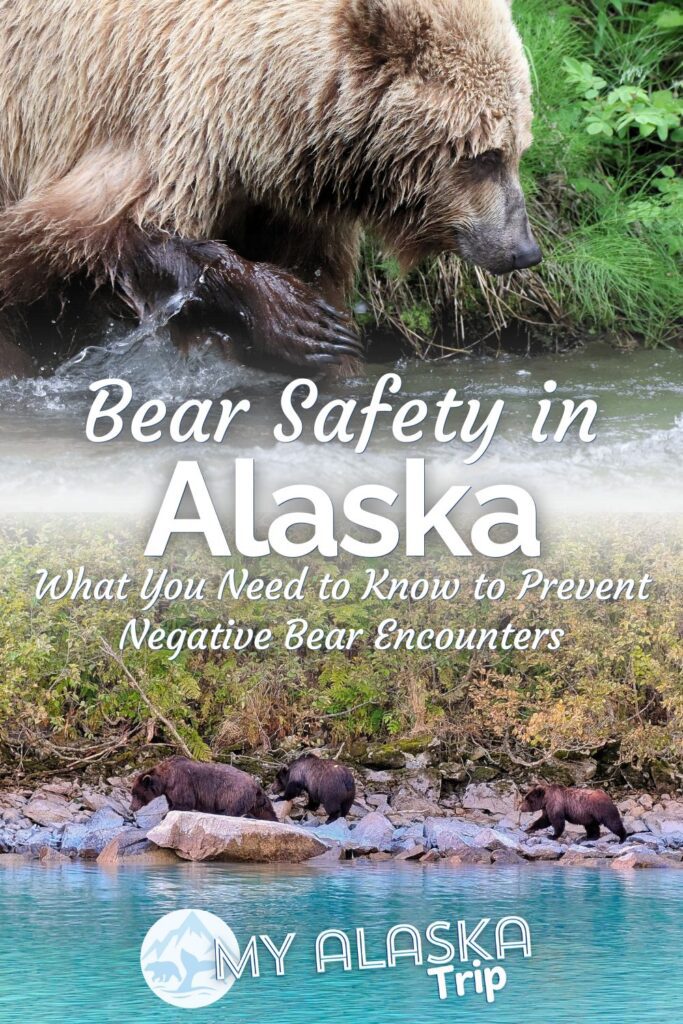
Bear Safety and Negative Bear Interactions
What is a negative bear interaction? It means that a bear attacks you, which is NOT common, but yes, it does happen from time to time. This actually happens everywhere there are bears, and is not something exclusive to Alaska; but we do have lots of bears in Alaska so you should know some basic bear safety tips so that you are properly prepared for your visit. Because the wilderness meets civilization around every corner, preventing negative bear interactions is key to both a great visit and a healthy bear population.
The best thing you can do to be prepared is to know how to react when you encounter a bear, what NOT to do when you encounter a bear, and minimize the chance of a negative bear encounter by your behavior and actions BEFORE you encounter a bear. Before we dive into these three items you should understand a few things about bears and why negative bear/human interactions occur.
NOTE: as you read on and see my photos of bears up close, know that I’m a professional photographer with a BIG lens. I know how to use my bear safety tactics and keep my distance.
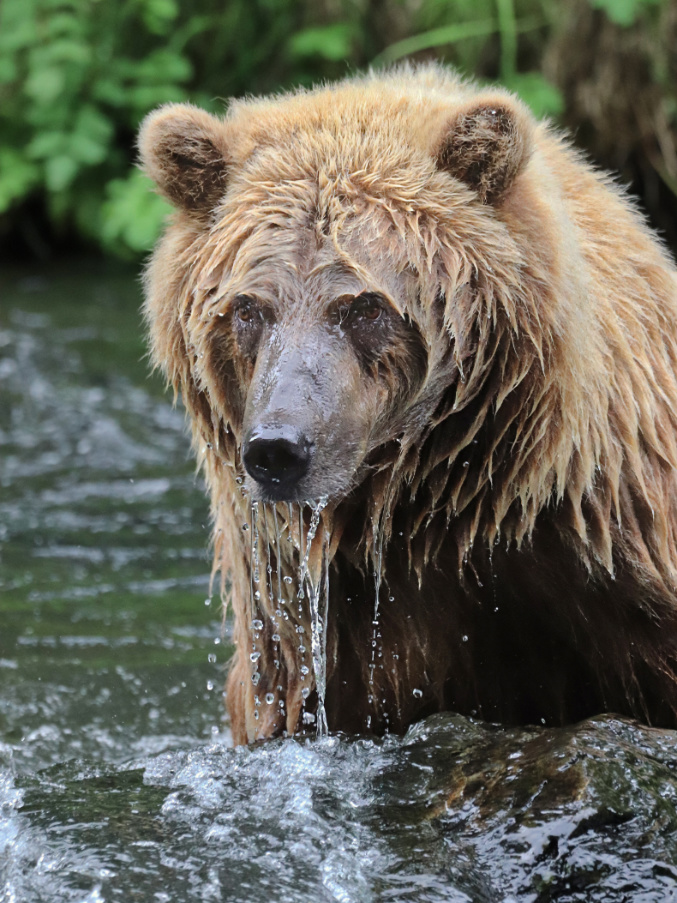
Be Educated about Bears in Alaska
As with most (if not all) important situations, it is better to be prepared for the situation BEFORE you encounter it. Educating yourself and your traveling companions on bear safety is a great start and is definitely worth your time. I would also suggest reading articles on bear safety from the Alaska Department of Fish and Game, the Alaska Department of Natural Resources, and the National Park Service. All of these resources have great information on their websites and some of it is very specific to the regions or areas that they manage and is also very timely.
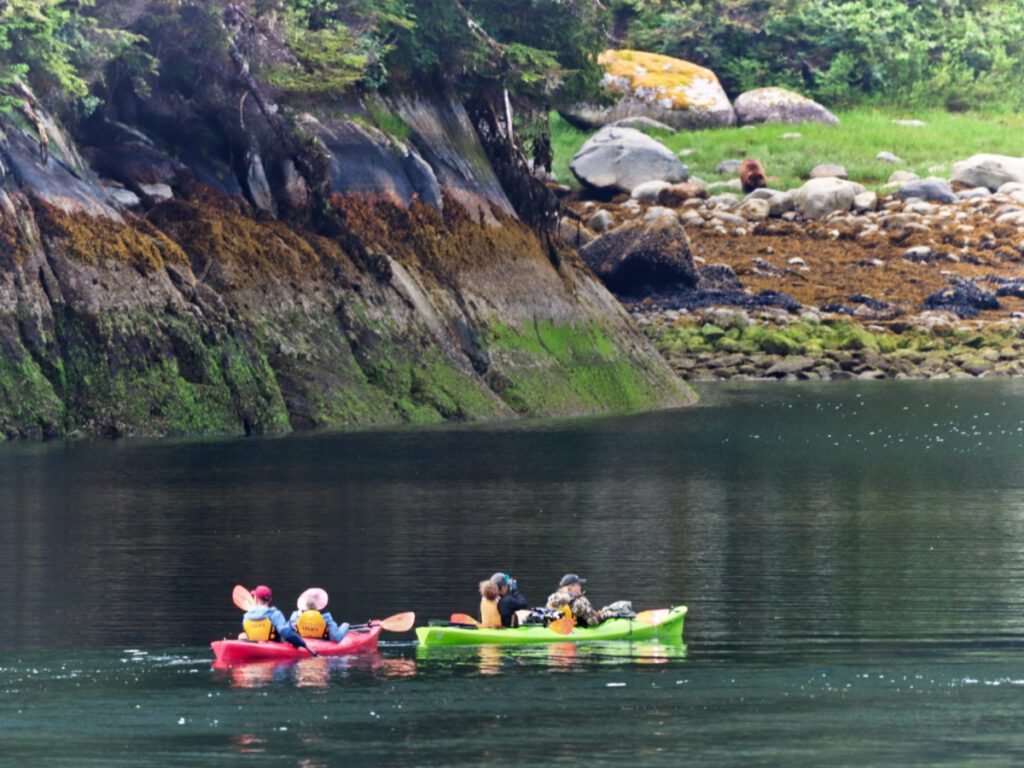
Remember that Bears are Not Teddy Bears
While pop culture, literature, and Hollywood have made bears out to be these cute cuddly characters that you would let your baby go to sleep with at night; bears are actually wild animals that are large, unpredictable, and can kill you. The kill you part is obviously a worst-case and rare occurrence, but it has happened to people before and can and will happen to people in the future. Bears are the apex predator of the forest, so if you’re planning any time out in nature, basic bear safety is important.
Any discussion about bears and bear safety needs to start with a healthy amount of respect for the size and strength of the magnificent animals. Furthermore, being animals, they are unpredictable. Nobody will be able to tell you with a high degree of certainty how bears are going to act or react to any given situation. It is all an educated guess. With that being the case, you have to realize and accept that anytime you are around bears there is a certain degree of risk. Is that risk high? Absolutely not and there are things you can do (be prepared!) to minimize that risk. Respect the actual concept of a wild bear and you’re on your way to staying safe.
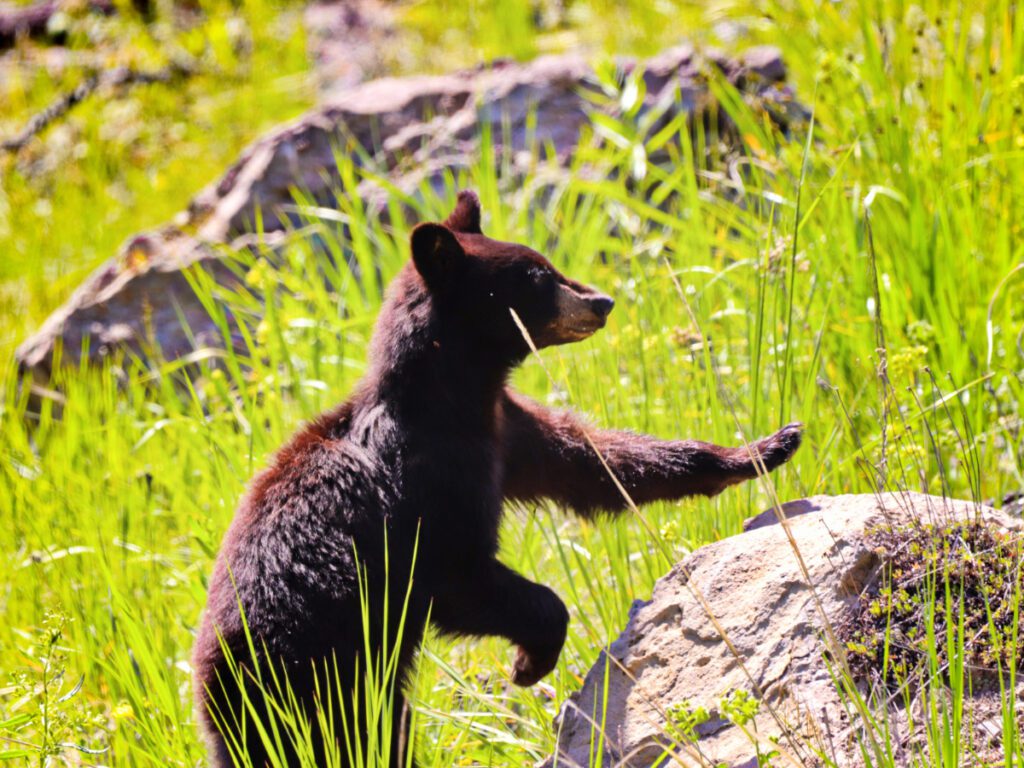
Why Do Negative Bear Encounters Happen?
Most of the time that bears attack humans it is some type of a defensive action by the bear. They are rarely looking to hunt or eat people. Yes, this has happened in some rare cases, but this is not the norm. Often you’ll get to just observe bears, like in Lake Clark National Park where they like to just wander the shore eating fish. Bears usually just want to be left alone and do their own thing, but will act aggressively if they feel threatened.
With that, let’s get into the three “Be Prepared!” items I mentioned earlier…
How to React When You Encounter a Bear
So you are hiking through the woods and you encounter a bear. What should you do? The most important thing is to remain calm and don’t panic. Don’t run as this may trigger a chase instinct with the bear. Assess your distance to the bear and ensure you are providing plenty of space between you and the bear.
Look around for other bears. Is this a mother with cubs? If so, stay far away and do not get in between the mother and her cubs. Is there a food source for the bear close by? Stay away from it and do not approach it. Don’t give a reason for the bear to become defensive. If you are in a group, get close together and speak in a loud, low, and firm voice so that the bear knows you are there.
If you are carrying bear spray (you should be!) hold it and remove the safety so that it can be quickly deployed if necessary. You can try to slowly back away from the bear but always face the bear and keep your eyes on the bear. If the bear approaches you then stand your ground and make noise, try to look big (wave your arms above your head), and remember to stay calm. Bears are curious animals so they may stand on their back legs or walk a little closer to get a better look. The odds are, however, that they will go along with their business and walk away.
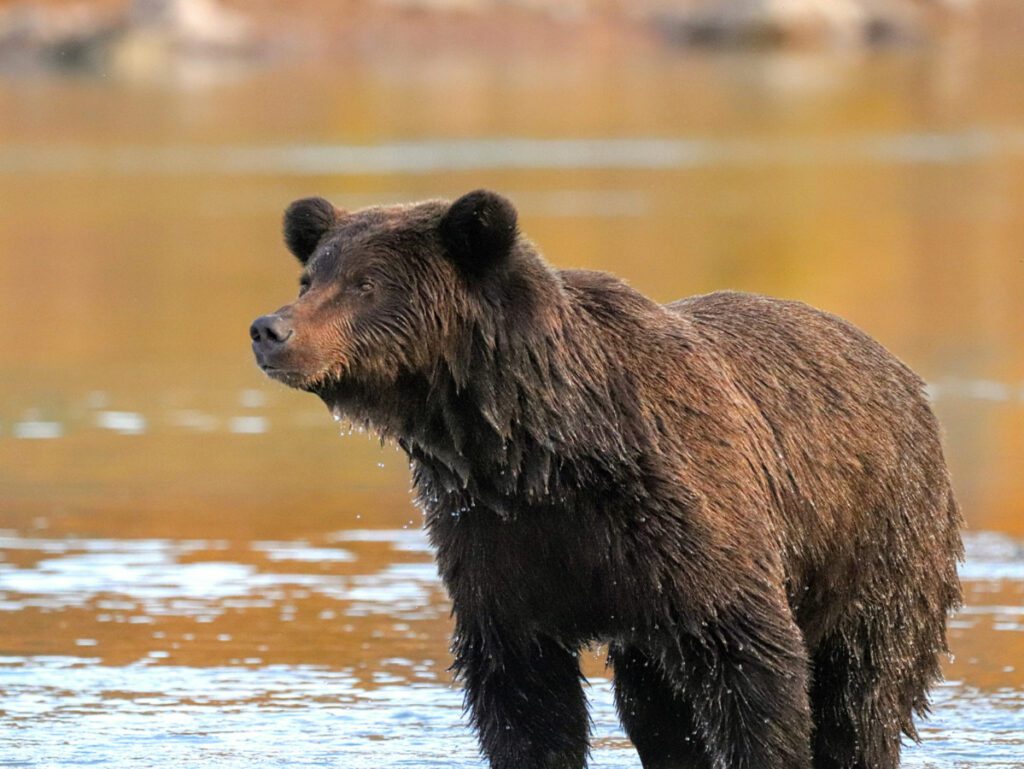
What NOT to do if you Encounter a Bear
I alluded to some of this just above but what you don’t do is just as important as what you should do when it comes to bear safety in Alaska or anywhere else, so it is worth repeating:
- Don’t run away
- Don’t get too close to a bear
- Don’t get between a mother bear and her cubs
- Don’t be silent
- Don’t surprise a bear
Keep your wits about you and keep your vibe chill. While staying calm won’t immediately make the bear disinterested in you, it’s key to being able to stay sharp and safe.
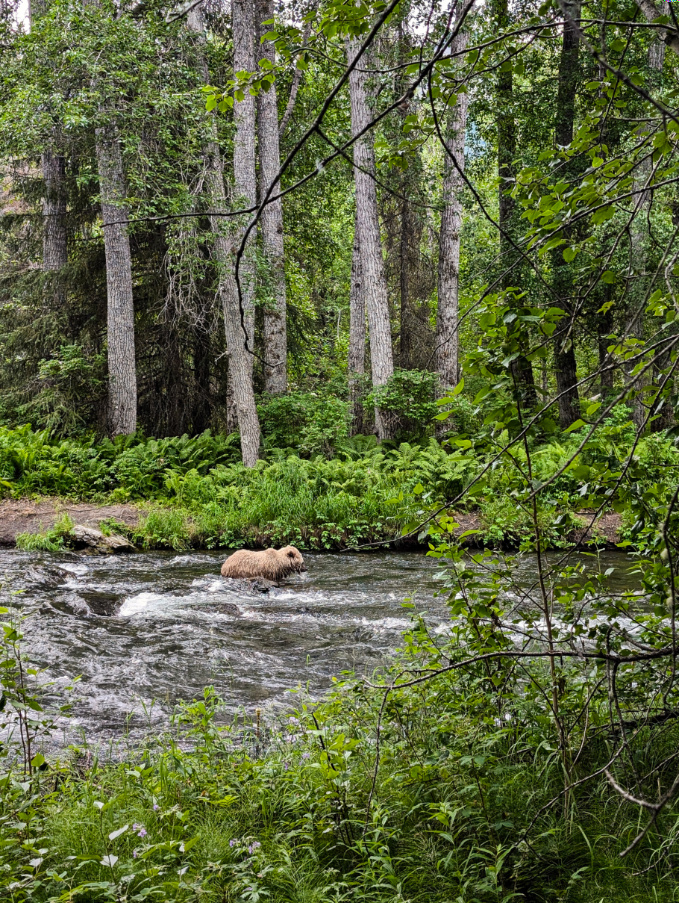
Preventing Negative Bear Interactions
Everything that I have discussed thus far has been what to do or not do if you encounter a bear. What about before you encounter a bear? Are there things you can and should do to prepare for an encounter or minimize your risk of a negative bear/human interaction? Absolutely.
Bear Spray
Carry bear spray, know how to use it, and make sure it is accessible! Bear spray is statistically the most effective deterrent that can be used against an aggressive bear. Play it safe and always carry bear spray when you are in Alaska. Check out our article about bear spray.
Note: just having bear spray on you isn’t the deterrent you might think it is, as bears don’t know what it is until they experience it. The purpose of having it on your person is in case you need to use it against a bear that’s gotten too close.
Arrange Alaska Bear Spray Rental here!
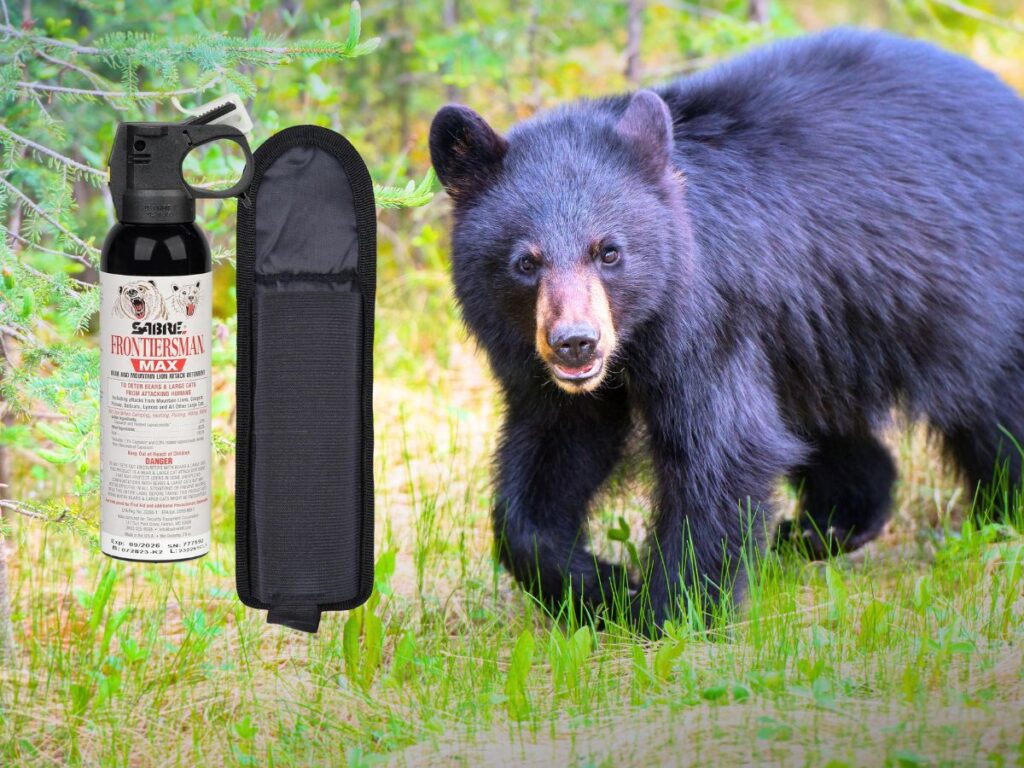
Safety in Numbers
Do not hike or explore the wilderness alone. There is safety in numbers and bears are less likely to be aggressive against a larger group. This also allows you to group together if there is an aggressive bear to seem larger to the bear. This is also an effective way to deter an aggressive bear. If you’re tundra hiking in Denali where you can see pretty far, having a bigger group that’s a bit spread out is a great deterrent.
Be Aware of your Surroundings
Regardless of whether you are hiking or just walking through a park, you should be aware of your surroundings. Many bear attacks occur when a bear is surprised by your presence or if you unknowingly get between a mother and her cub. Being aware of your surroundings will help to reduce this risk. This also means that you shouldn’t hike or run wearing headphones. If you are wearing headphones you can’t effectively be aware of your surroundings.
If you’re someplace with lots of other people but also lots of fish, like at the mouth or a river, or Russian River on the Kenai Peninsula is a good example, even though there are lots of people, bears will still show up because the food is so easily accessible. If you see lots of fish in the water, expect a bear nearby.
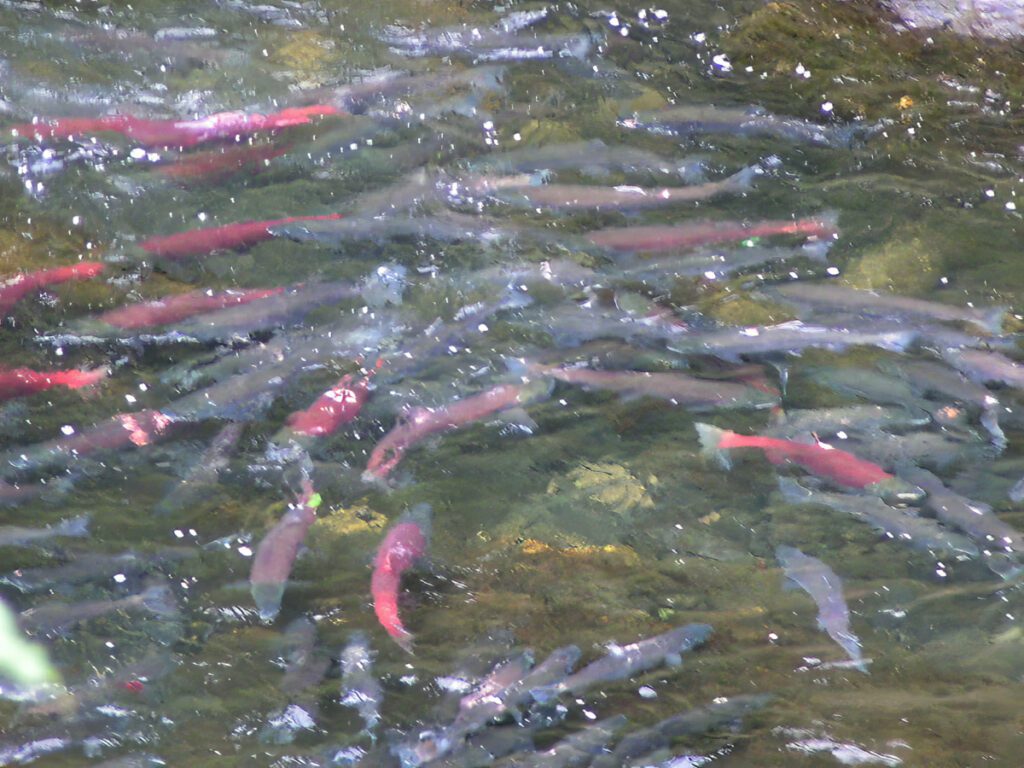
Make Noise
Make a reasonable amount of noise. A great way to not surprise a bear is to be heard by the bear before you are right next to them. Making a reasonable amount of noise, like talking with others in your group, will help with this. You don’t want to be one of THOSE hikers who makes an unreasonable amount of noise (if you think it is okay to hike with a speaker, this message is for you!) but you don’t want to be silent as you walk through the woods (or any other area where there might be bears).
Keeping your distance from bears is easy if you’re making noise, but even sometimes this bear safety tactic doesn’t deter them or make them run off. Making noise prevents a bear from being startled by your presence, thus not throwing them into defensive attack mode.
Tip: if you’re out bushwhacking (we did a lot of this with UnCruise in Southeast Alaska) have a fun phrase that you shout ever couple of minutes. This is great because even if you’re not visible to a bear deep in the woods, they’ll at least know you’re approaching and can tell you’re getting closer if you get progressively louder to them.
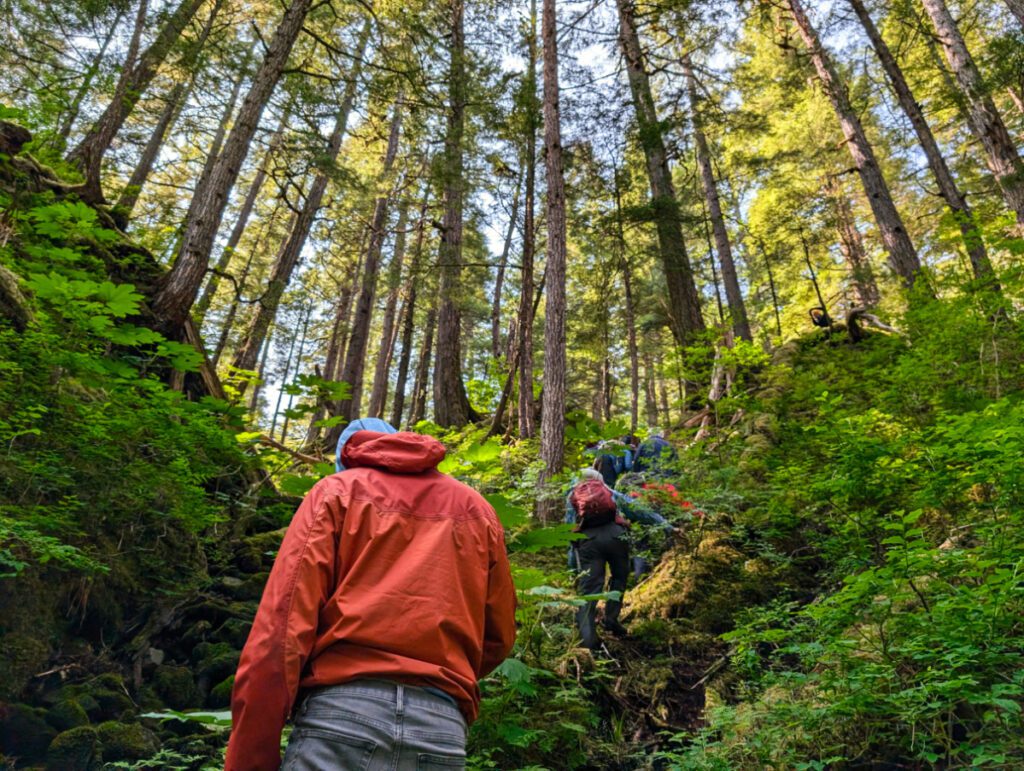
Properly Store Food
Keep food hidden and sealed. Bears have an incredible sense of smell and not only do they love to eat but they actually need to eat a lot to fatten up for winter hibernation. Food is a very important thing for them and if you are hiking around with an open bag of something, they may pick up on the scent of food and seek it out. Eliminate this by keeping food packed away and properly sealed so that bears can’t smell it.
If you’re camping or just hanging out in the wilderness enjoying a leisurely picnic, really pay attention to this rule. It’s the #1 rule of bear safety when you’re setting up camp, to keep food stored properly and away from humans just in case a bear gets interested.
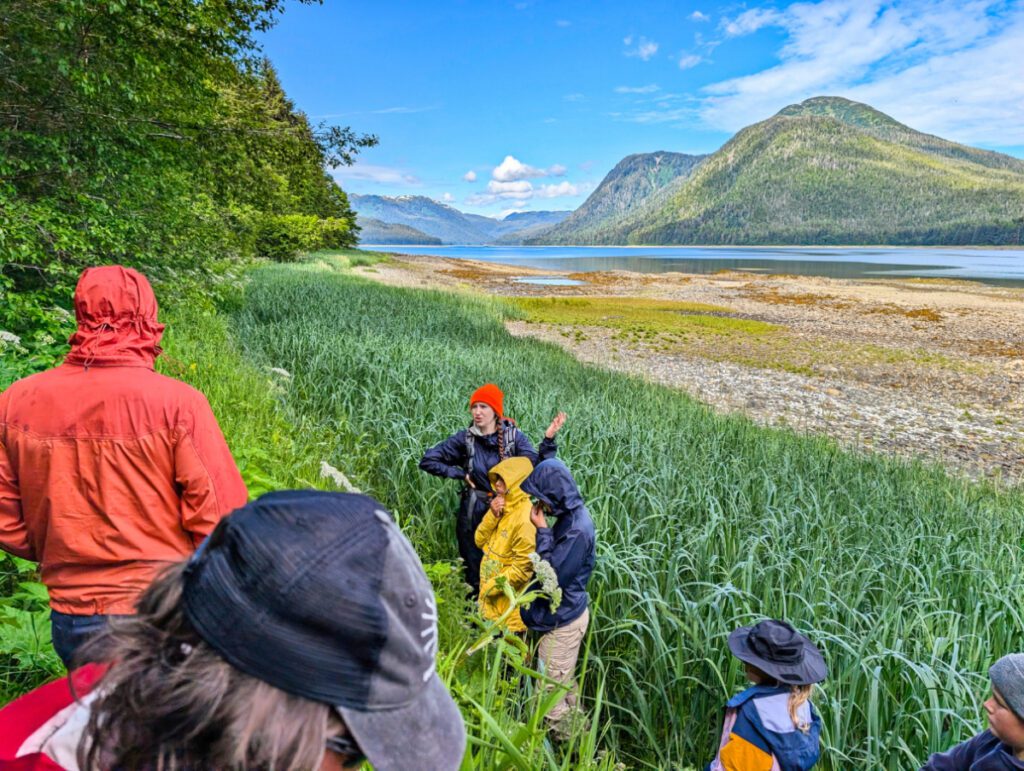
Be Safe! Bears are beautiful and majestic animals that I hope you will get to see while you are visiting Alaska. Just remember that they are wild animals and your goal should be to have a safe and enjoyable experience with the bear so that you can come back and experience Alaska again in the future. If you need bear spray while you are visiting Alaska (you do!), I know a good spot you can acquire it as you will have to get it here unless you are driving to Alaska. Bear spray is not allowed on planes or cruise ships into the state.
Check out Alaska Bear Spray Rental here!
If you have any additional questions about bear safety in Alaska or need recommendations for places you can safely observe bears from a distance, please leave a comment or send us a note. We’re always happy to share more and want to hear from our readers that they’ve had a wonderful, SAFE visit to Alaska!
